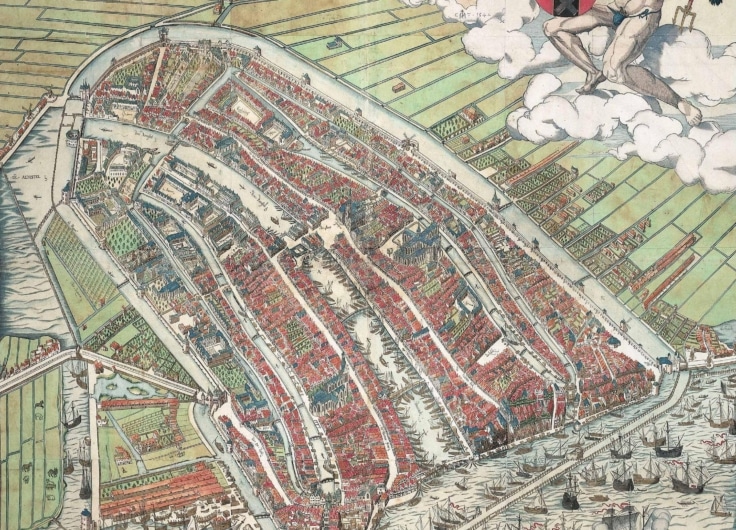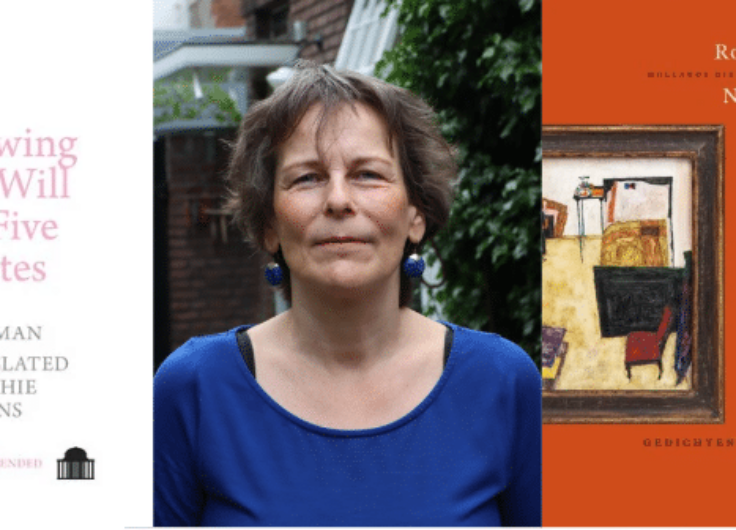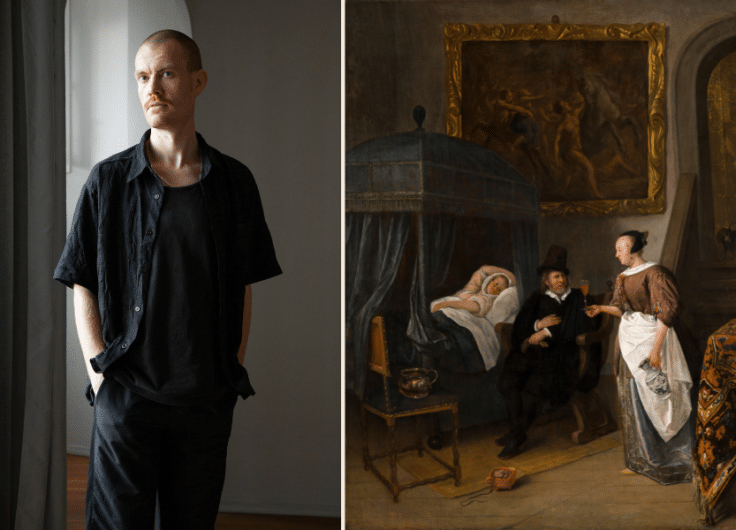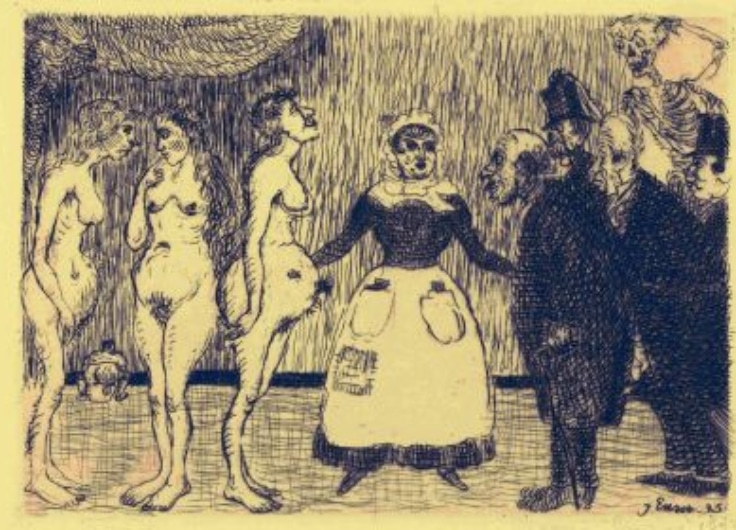‘The Melting’ by Lize Spit: Her Trauma Has No Melting Point
In The Melting, Lize Spit deals with adolescent cruelty and the scars it leaves behind. Four years after her victory lap through the Low Countries, Spit will now delight English-language readers with her translated debut novel.
The Melting is a pithy summary of the plot. The title refers to the giant block of ice in the back of Eva’s car. For the first time in many years, the 27-year-old has returned to her native village Bovenmeer – ice in tow. It is the 30th of December, the winter has just begun. ‘It wasn’t as cold in Brussels as it is here’, remarks Eva upon her arrival. ‘Here, there’s no mist to cover the wide-open landscape, and it’s almost below freezing.’ But it is not quite cold enough to stop the block from melting.
 Lize Spit
Lize Spit© Keke Keukelaar
So it melts. But why did Eva bring a block of ice to the memorial for Jan – a man who would have turned thirty on this penultimate day of the year. What happens when it melts? And what is it precisely that doesn’t melt?
In Flanders, The Melting was an immediate and huge success. In the wake of rave reviews and charming interviews, the debut from Lize Spit (b. 1988) flew straight to the official top ten rankings immediately after its publication in 2016, where it held its ground for several uninterrupted months. Though it made a smaller splash in the Netherlands, praise for the novel was no less. After just five months, the publisher Das Mag tacked a golden sticker onto the cover that read “over sixty thousand copies already sold”.
Support for the novel is easily justified. The title alone draws us in with its simplicity and wealth of meaning. Spit goes on to raise the above-mentioned questions in the very first chapters, and then holds her readers in a tight grip for nearly five hundred pages before they have all the answers. With a self-awareness characteristic of the most accomplished writers, she reveals her secrets painfully slowly – to invoke the most readily available metaphor, at the pace of a melting block of ice.
With a self-awareness characteristic of the most accomplished writers, Spit reveals her secrets painfully slowly
Spit moves between three layers of storytelling in The Melting. In the first, shortest chapters Eva describes the events of 30 December. She leaves Brussels early, visits the house of her youth, but then flees once she realizes someone might actually be home. She goes to Pim’s posthumous birthday celebration for his brother Jan (and a party that inaugurates the new milking parlour at a dairy farm in town), but she does not go inside. She hides in a separate stable. With her block of ice.
What invariably follows is a flashback to the crucial summer of 2002, when the great drama of Eva’s youth took place. She, Pim and Laurens would play together every day, as they always had done since the age of five. Together, the three of them had formed a bijzetklasje – a “side class”: three desks grouped together at the back of a classroom. Bovenmeer was too small for their age group to warrant its own class, and Eva’s parents lacked the personality to protest their daughter’s co-education alongside the two boys.
With strong and convincing foreshadowing Spit manages to weave her themes, the plot, and the psychology of her protagonist into a cohesive whole
Finally, what follows are what I gather to be other miscellaneous memories of Eva’s childhood. Her father’s clumsy flirtation with suicide, for example. Her mother’s alcoholic escapism. Her older brother Jolan, who fosters a keen interest in nature in order to shut out his dysfunctional parents. And especially Tesje, whose neuroses become increasingly compulsive and dangerous. It is, without a doubt, the more painful memories that predominate.
The clever thing about The Melting is that you have to pay close attention to the directness of language in order ultimately to understand what Spit is doing. With each minor revelation, it becomes clear to the reader, step by step, what is happening in the present and what has happened in the past. With strong and convincing foreshadowing she manages to weave her themes, the plot, and the psychology of her protagonist into a cohesive whole. It is precisely this skill that exhibits Spit’s maturity as a writer.
It is no coincidence that one of the very first things we learn about Eva is her warped sense of sexuality. In Brussels, where she leads a solitary and unsuccessful life, she engages in the most distant sex imaginable with one of her neighbours. And only because he wants to: ‘Half a year later, he wanted me to indulge him in more than just small talk. I wouldn’t say I considered this a plus, but it didn’t bother me as long as he washed up beforehand and let me keep my clothes on.’
The clever thing about 'The Melting' is that you have to pay close attention to the directness of language in order ultimately to understand what Spit is doing
The plot revolves around the “why” of this warped sexuality. It stems from that crucial summer of 2002, when the self-evident friendship between now thirteen-year-old Eva, Pim, and Laurens explodes with the germination of lust. The boys – whose feelings aren’t directed at her of course – involve the insecure Eva in their pubescent sex game which, due to the existing dynamics between the three characters, escalates terribly out of hand.
Eva goes on to explain why she was condemned to this friendship with Pim and Laurens: ‘I wasn’t so easily accepted among the girls. It was always up to me to let them know I wanted to be included. Then they’d form a wall and ask me for the password, which was constantly changing. I never guessed it right, so they’d make me answer a difficult question or a riddle, and even if I actually figured it out and was allowed to play flagpole or hairdresser with them for the last two minutes of recess, I became indebted to them, and three recesses later they could still seize my wafer cookies.’
So what was the premise of this sex game? Indeed: a riddle. One that the other girls would have to solve this time. Eva would come up with the riddle – the boys didn’t want to know so as not to be able to influence the other girls – and the girls would be lured by the promise of a 200-euro jackpot. With every wrong guess, they would remove one item of clothing until standing stark naked before Pim and Laurens – or almost naked if they had given up by then. Afterwards, as they had been doing for years, the boys would give the girl a rating.
And what was the riddle? We don’t find out until two hundred pages after it’s first mentioned, but of course, it has everything to do with the great block of ice that Eva carries around all day. ‘A man is found in a room with a noose around his neck, hanging over a puddle of water, dead. There’s nothing in the room but him, the rope and the water. No windows, no furniture. So the question is, what happened? How exactly did the man die?’
The book's structure, as subtle as it is transparent, is undeniably its strongest feature
The book’s structure, as subtle as it is transparent, is undeniably its strongest feature. It irrevocably propels the reader forward, which is all the more impressive considering the novel actually runs with one too many thru-lines. Warped sexuality, born from the hotbed of an oppressive village, and the cold vengeance of the now grown-up Eva – her trauma has no melting point – this could have been the recipe for a novel that reaches the status of a classic.
But Spit makes the characteristic mistake of a debut novelist by trying to fit too much into the story. Why does she reflect so extensively upon Eva’s family life? To emphasize her exceptional position in the village that causes everyone to look at her with pity and compassion? And why are so many pages devoted to the slow demise of Tesje’s sanity? To demonstrate that – like Jolan’s flight into the study of nature – there are different ways to respond to the painful existence of being born into this particular family?
There are, in short, good reasons why Spit will have thought it important to give such a complete image of Eva’s childhood. But in practice, the ‘other memories’ limit the story’s progression. Unlike the bullied Jan’s suicide, which is also slowly revealed, the childhood memories never become a particularly relevant subplot. Because Jan was the only one who showed any kind of interest in Eva’s budding femininity (and because she, therefore, developed feelings for him), his death is
a relevant subplot. I must therefore confess that, with all the admiration I have for The Melting, I found myself bored at times. As tight as the composition is, it is not quite tight enough.
This also has to do with Spit’s language use. It does not sparkle enough to keep those unimportant passages interesting. The novel features a few clever observations – like the distinction between horizontal houses, dominant in a village, and vertical houses, dominant in the city. But the author puts this revelation anything but succinctly: ‘Ever since I made the distinction, I can’t help but notice that most village houses are horizontal, and most city houses are vertical, so the saying “a city that never sleeps” doesn’t really tell us much about its inhabitants.’

This sentence is typical of Spit’s style. Her language is functional, focused on storytelling – certainly not on drawing attention to oneself. Her sentences are often short, bereft of fussiness, and simply serve their purpose. Readers will find themselves sliding supplely through the story, unlikely to slip and fall over awkward imagery. But with a book the size of The Melting, one sometimes longs for language with the power of an aphorism. Language that is memorable and quotable.
So be it. Perhaps one shouldn’t expect too much from a debut that is, in spite of these objections, as compelling and unique as this one.
Lize Spit, The Melting, translated from Dutch by Kristen Gehrman, Pan Macmillan, London, 2021, 416 pp.












